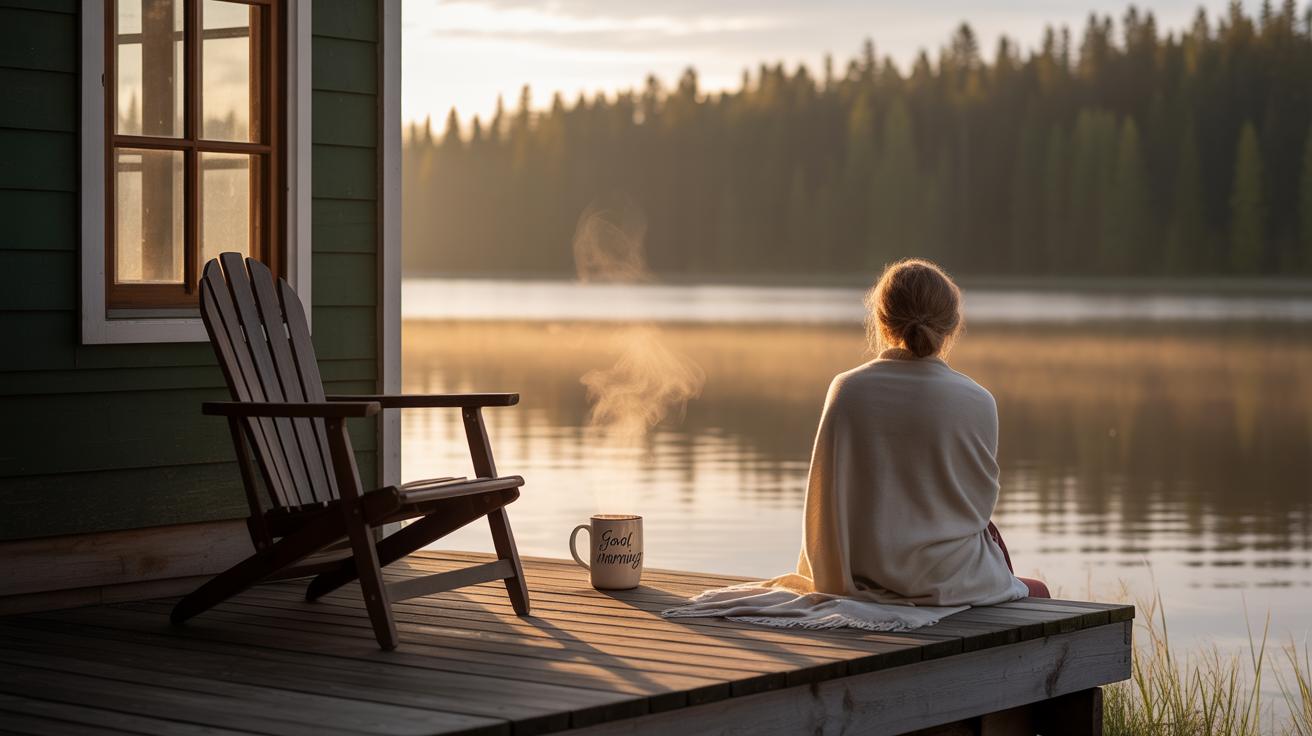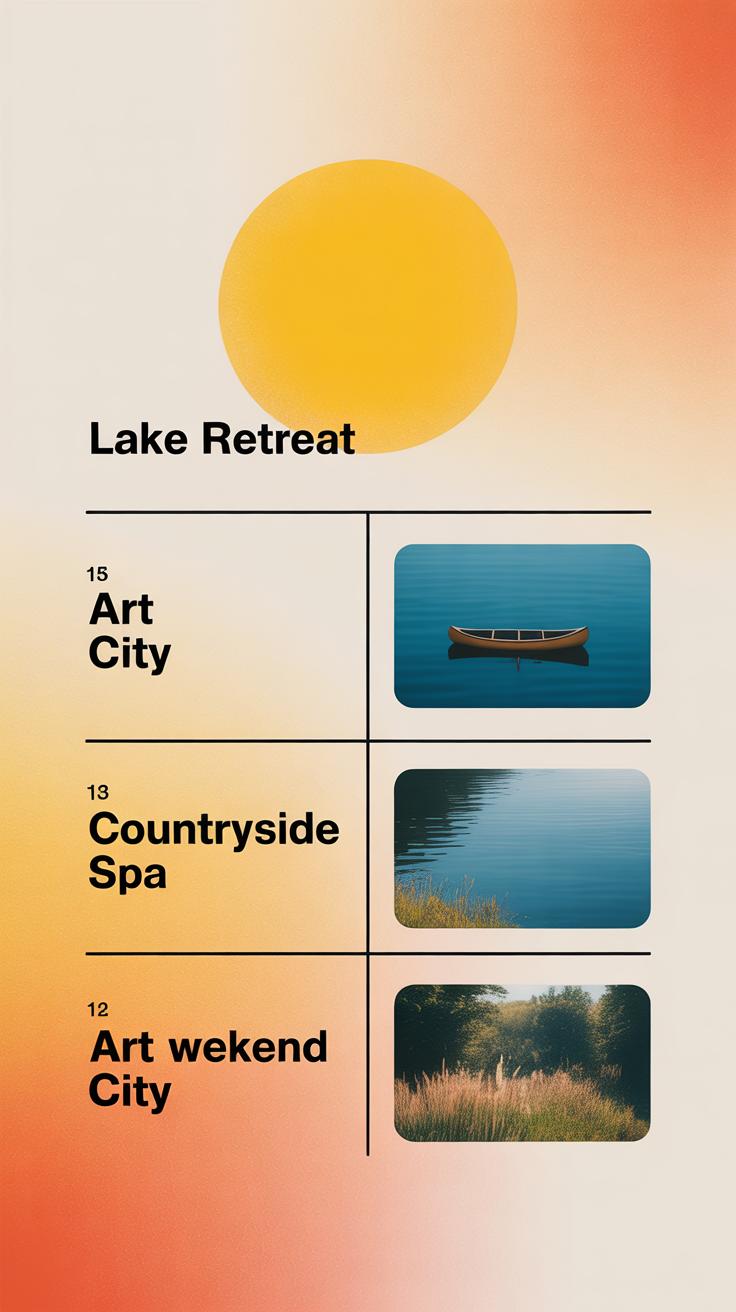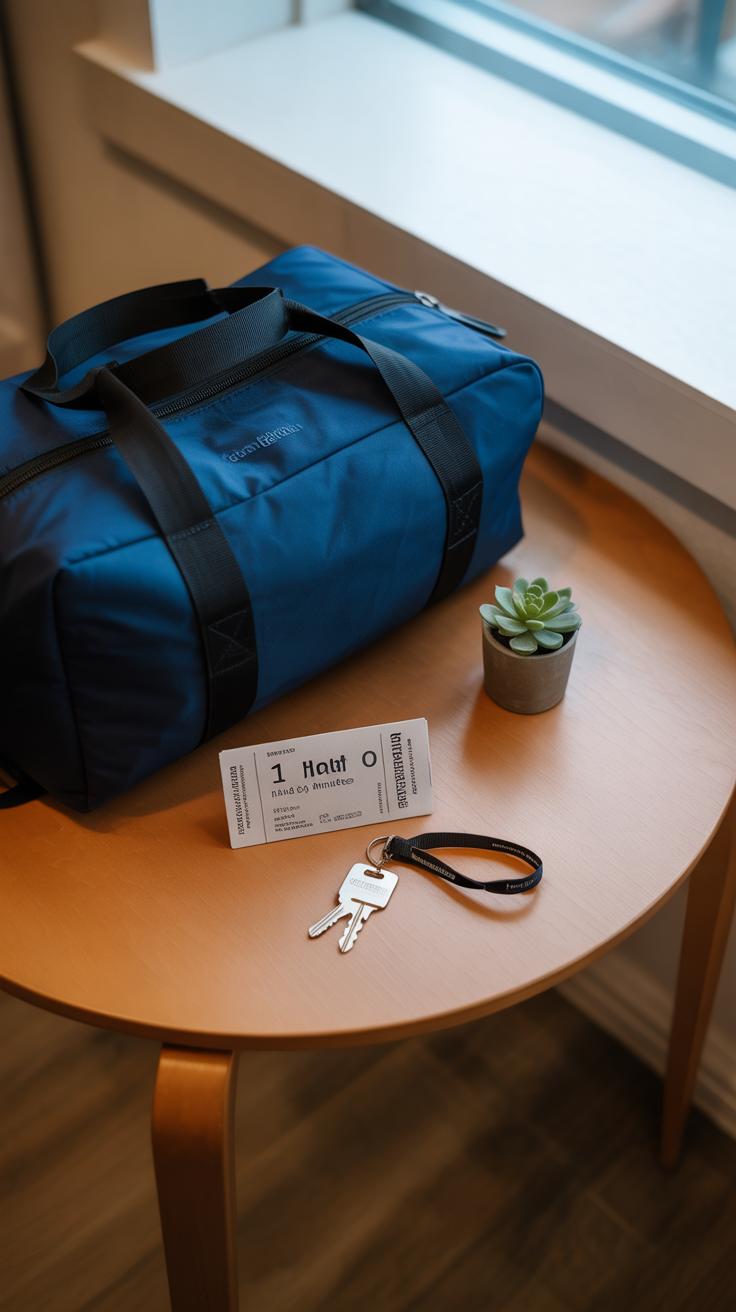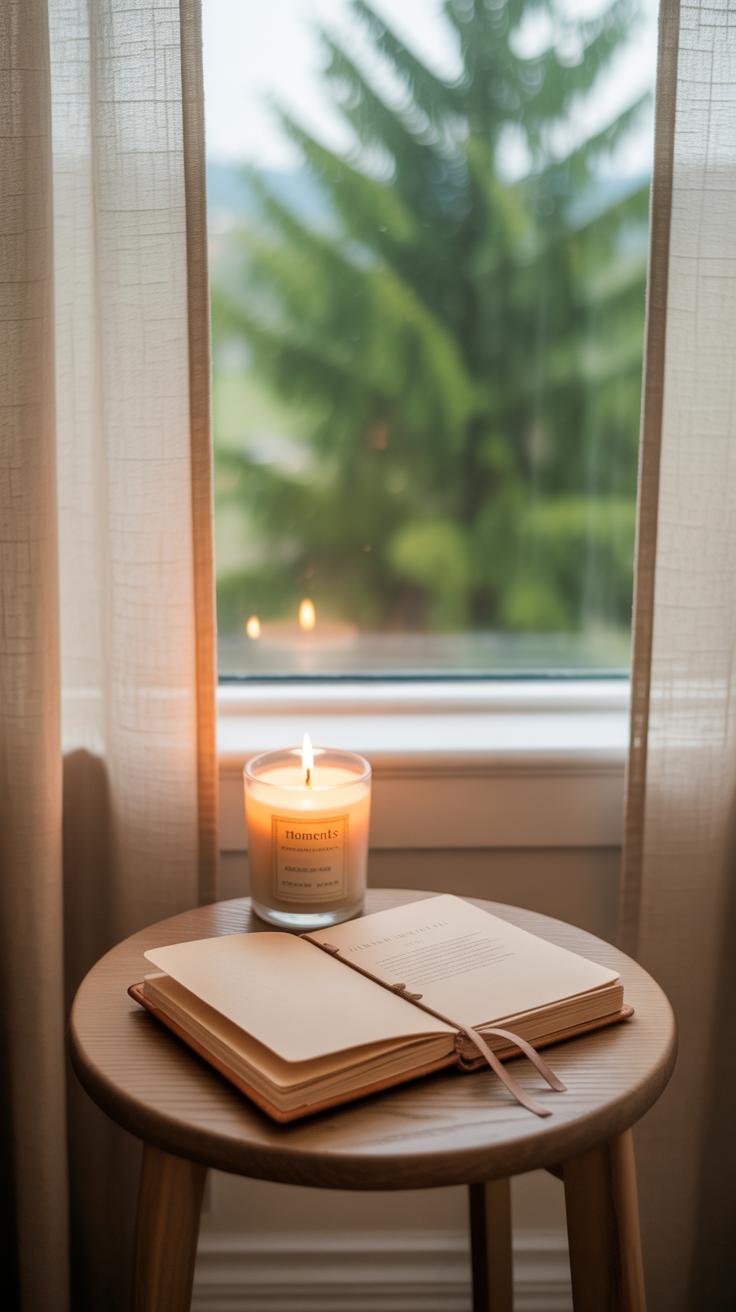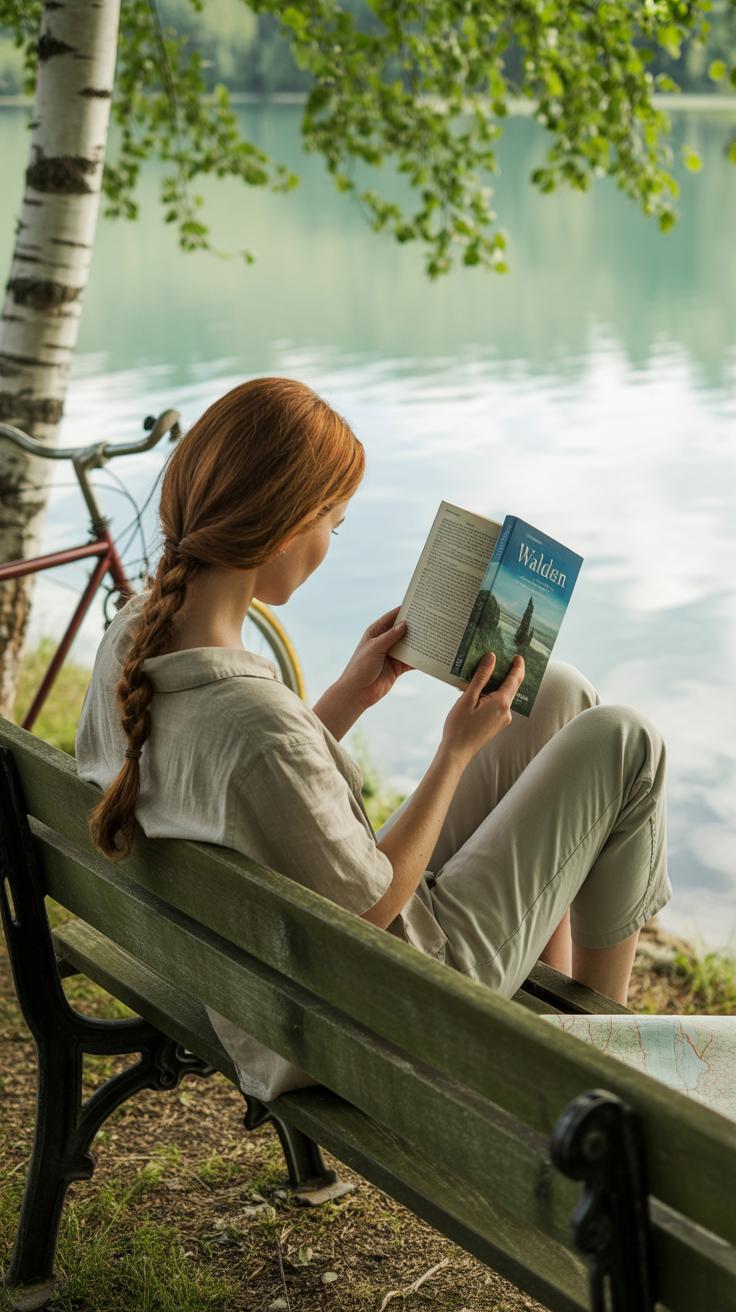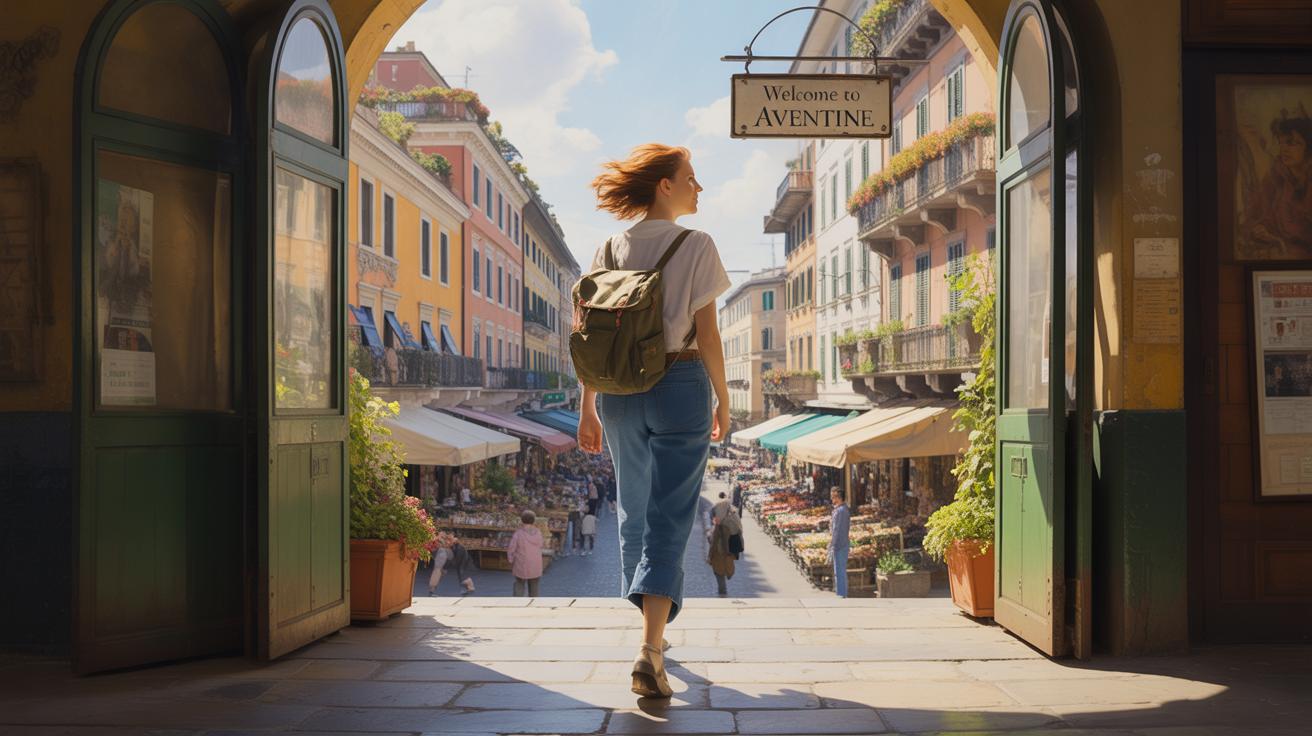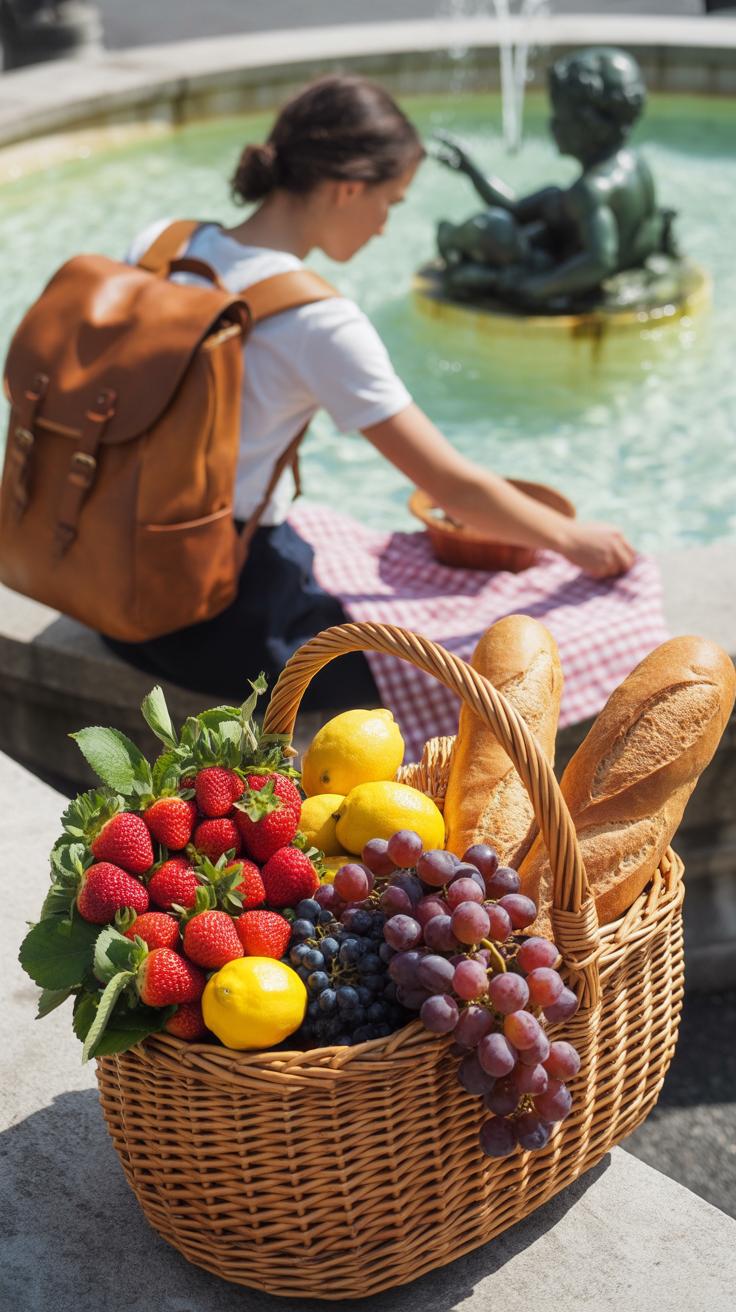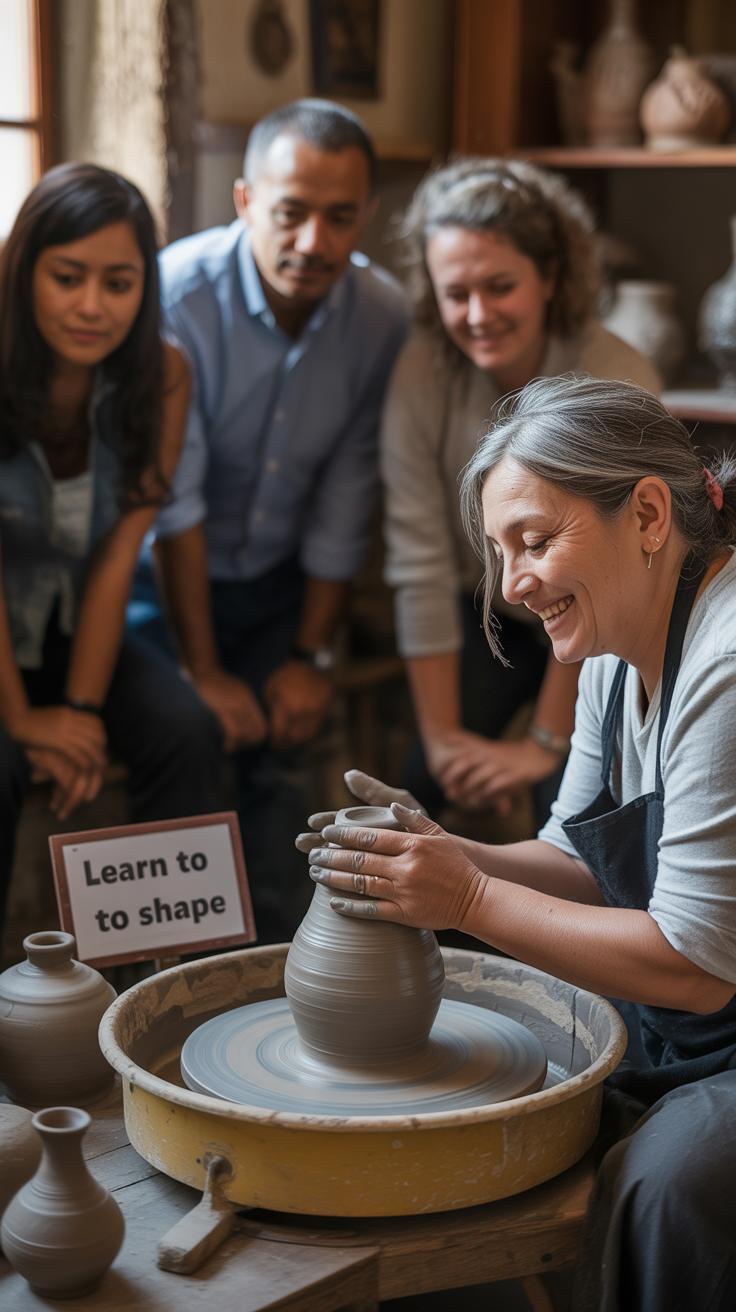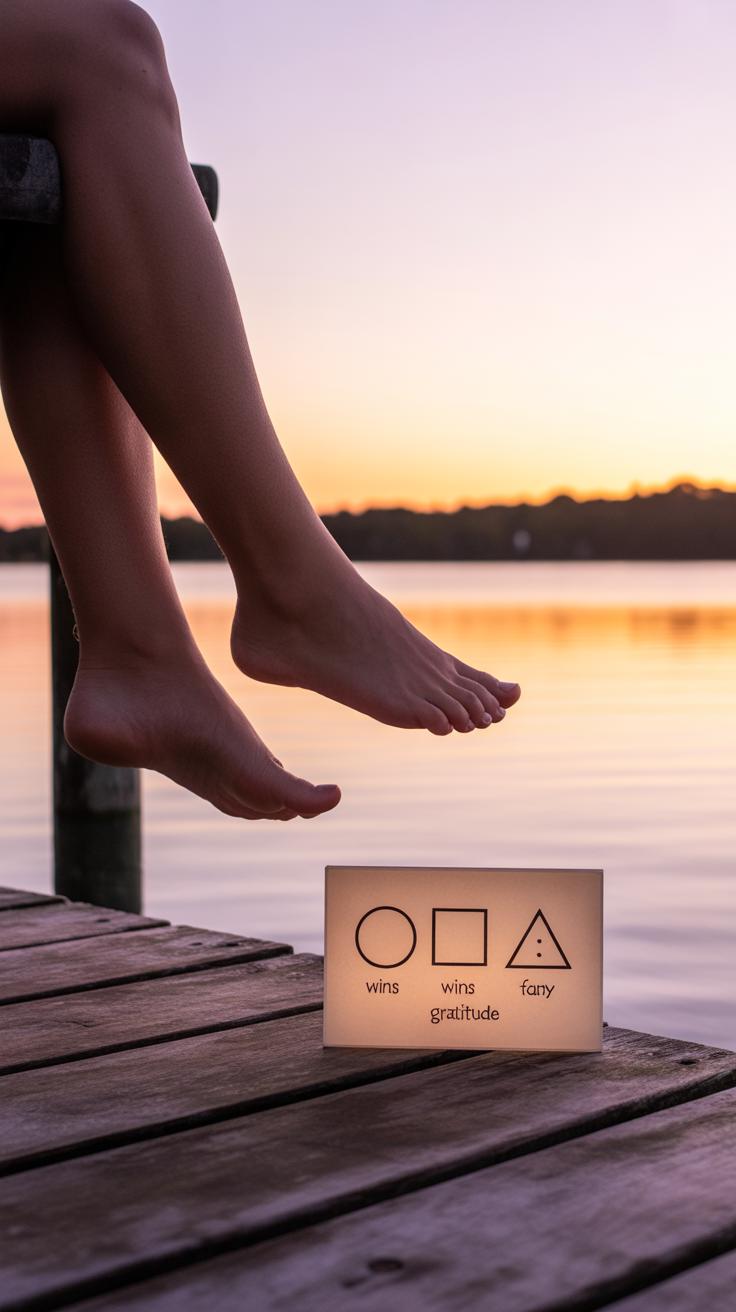Introduction
Solo travel offers you a chance to reconnect with yourself and find peace away from daily routines. It allows for a refreshing break where you can unwind and recharge. Weekend getaways are perfect for this purpose. They are short enough to manage easily and long enough to give you rest.
In this article, you will find solo travel ideas for weekend trips that focus on restoration and peace. We will cover ways to plan your trips, places to visit, activities to enjoy, and tips to help you feel renewed. These ideas will inspire you to take solo trips that leave you feeling better and more balanced.
Choosing Your Ideal Solo Weekend Getaway
Picking the right solo getaway can feel tricky. You want a place that matches your interests but also leaves you feeling refreshed, not drained. Start by thinking about how far you want to travel. A long trip might add stress, especially if it’s just a weekend. Shorter travel means more time to relax.
Next, consider the setting that suits your mood. Do you lean toward quiet natural spots like forests or lakes? Or maybe a city with calm streets and a slower pace? The vibe matters, too. Some destinations buzz with energy, which can be inspiring but tiring. Others invite you to slow down and breathe.
Think about what usually restores you. Is it silence, or gentle background noises? Fresh air or cozy cafes? Sometimes the best choice is a place where you can mix these, like a small beach town or a mountain village.
Finding Peace in Nature
Nature has a way of easing the mind. Forests, mountains, and lakes offer calm that’s often hard to find in daily life. The quiet of tall trees or the slow ripple of water can ease mental clutter. You might find a secluded trail in a national park or a lakeside spot where the only sound is water lapping against the shore.
Places like a mountain overlook or a quiet beach during sunrise could give you moments of unexpected clarity. Even just sitting on a rock by a stream feels different from being stuck inside. You don’t need a packed itinerary in nature. Sometimes wandering without a plan is more healing than any guided tour.
Exploring Quiet Towns and Cities
Small towns and quieter cities often have a slower rhythm. They offer a chance to explore local life without feeling overwhelmed. You can visit a small museum, stroll leafy streets, or find a café with just a few customers. This kind of calm can encourage you to be present, to notice details you might usually overlook.
These places let you dip into culture gently. Instead of rushing through famous landmarks, you can settle into the neighborhood vibe and maybe chat with locals. There’s a certain peace in this kind of travel, where the experience feels less like a checklist and more like a quiet conversation with the place you’re visiting.
Planning Your Travel and Stay
Booking travel that feels easy almost makes a difference on its own. When you’re flying or taking a train, try to pick times that avoid rush hours or very early mornings—those can set a stressful tone. Mid-morning or early afternoon departures often feel less hectic. If the journey’s short enough, a direct route is usually best, even if it costs a bit more. Changing trains or buses might seem like a chance to explore, but alone, it can add unnecessary pressure.
Think about how you like to arrive. Some people prefer driving because it gives freedom to stop and stretch. But parking and traffic can drain your energy before you even get to your destination. Public transport might feel safer and more restful if you want to avoid roadside stress.
For accommodation, look for places that promise quiet. Small B&Bs or single-room cabins often offer a sense of privacy you won’t find in crowded hotels. Rooms with views of nature or a private patio can help you unwind after travel. Reading through guest reviews with an eye for noise complaints can be surprisingly helpful. Even within a busy city, some boutique hotels have quiet courtyards and calm vibes—don’t overlook those. Think about what calm really means for you—sometimes a softly humming city feels less lonely than complete silence.
Embracing Solo Time for Reflection
Spending time alone during your trip gives you a rare chance to slow down and really think. Without the usual distractions, your mind can wander in unexpected ways. Sometimes it’s as simple as sitting on a bench at sunrise, watching people wake up, or finding a quiet nook in a café to just be with your thoughts. You might find that silence feels uneasy at first, but this quiet space can turn into something restful if you allow it.
To enjoy your own company peacefully, try small rituals: bring a favorite book even if you don’t open it, listen to soft music without needing to fill the space with noise, or take reflective walks without a destination. It’s okay if your mind drifts or if you struggle to stay present. Often, the discomfort leads to deeper reflection.
Practicing Mindfulness on Your Trip
Mindfulness doesn’t have to be complicated or lengthy. A few simple exercises can help you feel centered when traveling alone. For example, take a moment to focus on your breathing—count your breaths up to five, then back down. Or ground yourself by naming five things you see, four things you hear, and so on. It sounds almost too basic, but these small practices often calm a restless mind.
You could also try mindful eating. Notice the taste and texture of each bite, without rushing. It’s surprising how much this sharpens your awareness. Even standing still for a minute, paying attention to your body’s sensations, can anchor you in the present.
Journaling and Self-Discovery Activities
Writing during solo travel can feel both revealing and a little vulnerable. Don’t worry about structure or perfect words. Instead, ask yourself prompts like: What am I feeling right now? What do I want more of in my life? What surprised me today? Or try listing moments that made you feel alive, or even frustrated.
Creative activities like sketching a scene, collaging souvenirs, or taking photos with a theme (like doors, colors, or shadows) invite you to notice new details. These simple acts encourage looking inward by focusing outward. Over time, your journal might become more than notes—it could be a quiet conversation with yourself.
Finding Restorative Activities
When traveling solo for a weekend, picking activities that gently ease your mind and body can make all the difference. You don’t have to fill every moment with something intense or novel. Sometimes, the simplest things restore you best.
Think about light hiking on easy trails—not the kind that leaves you out of breath, but those with quiet surroundings where the only sounds are birdsong or rustling leaves. It’s calming and lets your thoughts wander without pressure. I once spent a few hours walking a gentle forest trail alone, and by the end, I didn’t just feel more relaxed; I actually had clearer thoughts about some worries I’d been carrying.
Other low-key outdoor options include bird watching or beachcombing, which ask little from the body but give your mind room to breathe. These activities have a rhythm that invites you to slow down and notice small, often overlooked details.
If you’re inclined to stay more sedentary yet still want to invigorate your senses, spas can offer more than just pampering. A massage or soak can ease physical tension, but it can also create space for mental ease. Sometimes, that surrender to calm is exactly what your weekend needs.
Yoga and meditation, whether practiced solo or in a class, can deeply enhance how you feel. Even a short session centering breath and awareness can shift your mood. I’m often surprised how just 20 minutes of stretching and quiet focus makes me less restless and more grounded. Finding a local studio for a drop-in class, or simply rolling out your mat in a peaceful spot outdoors, adds a layer of intentional rest to your trip.
What kinds of activities help you feel truly recharged? It might take a bit of trial—and maybe some quiet exploration—but the right mix will quietly remind you why traveling alone can be the most nurturing thing.
Eating Well on Your Solo Trip
Eating well while traveling alone can really shape your experience in subtle ways. Mindful eating—actually paying attention to what you put in your body—can help you slow down and savor moments that might otherwise rush by. It’s not just about what you eat, but how you eat. Sitting down, without distractions, focusing on flavors or textures can make meals feel restorative, almost like a form of meditation.
Choosing Nourishing Local Cuisine
When you’re out exploring, picking fresh, local options is usually a good bet. Markets often have seasonal fruits and vegetables, which deliver energy without weighing you down. Think about choosing dishes that lean on vegetables, lean proteins, or grains prepared simply. Sometimes, street food can surprise you with wholesome choices, even if you hadn’t expected it. Don’t hesitate to ask locals for their recommendations—that often leads to discovering gems you wouldn’t find otherwise.
Preparing Simple Meals for Yourself
Staying in a place with kitchen access lets you keep some control over your diet, which can be comforting. Simple meals like a salad with local greens, nuts, and cheese or a rice bowl with fresh veggies can be both easy and satisfying. Shopping for ingredients can also feel grounding, placing you firmly in your surroundings. Even when energy is low, assembling something quick with a few fresh items can keep you feeling balanced without much fuss.
Connecting Safely with the Local Culture
Solo travel offers a unique chance to immerse yourself in local culture—but doing so safely and comfortably takes some thought. When you’re on your own, it’s easier to miss social cues or misjudge situations. That’s why staying aware and respectful is key to enjoying cultural experiences without feeling overwhelmed.
Visiting Cultural Sites and Events
Many cultural activities can be surprisingly rewarding when you visit solo. Think about museums, art galleries, historic neighborhoods, or open-air markets—you can take your time without worrying about others’ pace.
Music or dance performances, local festivals, and religious ceremonies (open to visitors) bring real insight into a place’s traditions. But remember—always observe dress codes or photography rules. For example, some temples may ask visitors to cover their shoulders or avoid taking pictures inside. Such small gestures go a long way.
Try to tune into the atmosphere quietly, ask thoughtful questions if it feels right, but don’t force conversations. Sometimes, just watching and listening teaches you enough.
Joining Group Tours or Classes
If you want to balance solo freedom with connection, joining a small group activity might fit well. Cooking classes, craft workshops, or guided city tours often welcome solo travelers, giving you a safe, casual environment to meet others while learning something new.
These opportunities let you engage deeper with the culture without navigating unfamiliar social dynamics alone. Plus, having a guide usually means you avoid common tourist pitfalls or unsafe spots.
Even if you’re shy, these settings can ease any anxiety about solo exploring. I remember a pottery class where the instructor helped me feel part of the group immediately. It turned one quiet afternoon into a memory I still share.
Staying Connected and Safe While Traveling Alone
Using Technology for Communication
When you’re traveling solo for a weekend, staying connected with family or friends can feel like a lifeline. Luckily, there are plenty of tools to make this easier than you might expect. Apps like WhatsApp, FaceTime, and Messenger let you check in with just a few taps, even when you’re out of the country. I’ve found apps with location-sharing features—like Find My Friends or Google Maps’ location sharing—especially helpful. They let someone you trust see where you are without needing constant updates. And then there’s offline messaging apps, like Bridgefy, which can work without internet, useful if you find yourself somewhere with no signal.
Still, you don’t want to be glued to your phone the entire time, right? It’s a balance between staying present in your surroundings and reassuring your loved ones. Quick, scheduled check-ins might be a good middle ground. Something so simple as a “Hey, I’m good” message at lunchtime can ease concerns on both sides.
Simple Safety Practices for Solo Travelers
Safety can feel tricky when you’re on your own, but simple steps make a big difference. Before you go, share your itinerary with a relative or close friend. Let them know key details—where you’ll be, how long you plan to stay, and any changes you make along the way. I guess some travelers hesitate, thinking it might feel like you’re being watched, but it’s more about having someone who knows where you are if things don’t go as planned.
Keep essentials close. A small flashlight, a whistle, or a backup phone battery can be surprisingly reassuring. Trusting your instincts matters, maybe more than any specific item. If a situation feels off, it probably is. Don’t hesitate to leave or ask for help. And if you’re exploring at night—or unfamiliar places—stick to well-lit areas and avoid shortcuts that don’t feel safe.
Solo weekends can open unexpected joys, but a little planning around your safety and communication keeps those joys uninterrupted. Isn’t it strange how a few small habits can change the whole vibe of your trip?
Overcoming Challenges of Solo Travel
Handling Moments of Loneliness
Loneliness can sneak up when you least expect it—even if you chose this trip for solitude. When those quiet moments feel heavy, reach out to simple distractions that feel comforting rather than overwhelming. Reading a book in a cozy café or journaling about your day can shift your focus without demanding social interaction. Sometimes, letting yourself feel the quiet without rushing past it helps too.
Connecting briefly with locals or other travelers might also lift your spirits. A casual chat while waiting in line or joining a group tour can break the silence without deep commitment. It’s okay to crave company and also want space—both can exist in the same trip.
Dealing with Unexpected Situations
Plans rarely stay fixed. Flights can be delayed, weather turns sour, or a reservation gets lost. When these moments come, your best tool is calm flexibility. Instead of fighting the change, try to see it as part of your story. Ask yourself: what can I learn from this? Or, what’s one small thing I can control right now?
Carrying a backup plan doesn’t mean you must stick to it, but it can ease anxiety. For example, having a list of nearby cafés or alternate activities helps if your original idea falls through. Taking deep breaths before reacting also settles nerves.
Solo travel is unpredictable, sure, but it’s also a chance to build resilience. Each hiccup is a quiet reminder that you can handle more than you expect—though that doesn’t mean you won’t feel unsure sometimes. That’s perfectly human.
Making the Most of Your Restorative Solo Getaway
As your weekend trip draws to a close, it’s tempting to rush back into everyday life. But taking time to pause before leaving can make a big difference in how refreshed you actually feel. Try spending your last morning in quiet reflection—maybe journal a little or simply watch the world wake up around you. These moments allow you to slow down and absorb what you’ve experienced.
Think about the small victories you had: that peaceful walk, the meal that surprised you, or the spontaneous decision to explore an unfamiliar street. Recognizing these helps you leave with a sense of accomplishment, not just exhaustion.
When packing, don’t just shove things in your bag distractedly. Use this as a mental cue to organize your thoughts—what did you learn about yourself? What habits felt soothing? This step sets a gentle boundary between your getaway and your usual routine.
Before heading home, ask yourself:
- What can I carry forward from this trip into my daily life?
- How can I maintain the calm or clarity I found here?
- Are there small actions to remind me of this break?
These questions don’t need instant answers, but they open a space for ongoing self-care once you’re back.
Setting Intentions Before You Return
Before leaving, take a moment to articulate your intentions for life after this trip. You might write down one or two things you want to explore further—perhaps slowing down your mornings or prioritizing time for yourself. Intentions don’t have to be grand or rigid. In fact, being a little vague can let them evolve naturally. Just capturing a thought like “I want to keep feeling this peace” can hold you accountable without pressure.
Sometimes, the best intentions come from unexpected feelings you noticed while away. Was it freedom from digital distractions? Or the joy of unplanned adventures? Reflect on those and see how you might invite them home with you. You don’t need to change everything—maybe just find a way to tweak one part of your routine.
Planning Your Next Restorative Escape
Once you’re back, your mind might start bubbling with ideas for the next trip. Let these ideas simmer. Planning ahead can help you maintain a rhythm of breaks, but try not to overcommit. Solo travel is about flexibility, after all. Think about what worked this time and what felt less helpful. Should your next getaway be similarly quiet or a bit more engaging?
Consider small, local places you can visit for a quick reset. Not every trip has to be a far-flung adventure to feel restorative. Sometimes, changing your environment just enough can provide a new perspective.
And if you find yourself drawn again to solo travel, that’s perfectly fine. Maybe it’s the solitude you crave, or the chance to tune in to your own pace. Either way, keep your priorities in mind and let your future trips support your well-being, not add to your stress.
Conclusions
Solo weekend getaways can greatly boost your well-being. By choosing the right places and activities, you create a space for your body and mind to heal and refresh. Whether you prefer nature, quiet towns, or creative pursuits, there is a solo trip idea made for you.
Use the insights and suggestions from the chapters to plan your own restorative weekend. Traveling alone gives you full control to relax and enjoy your time. Start small, explore often, and let solo travel renew your energy and spirit.


